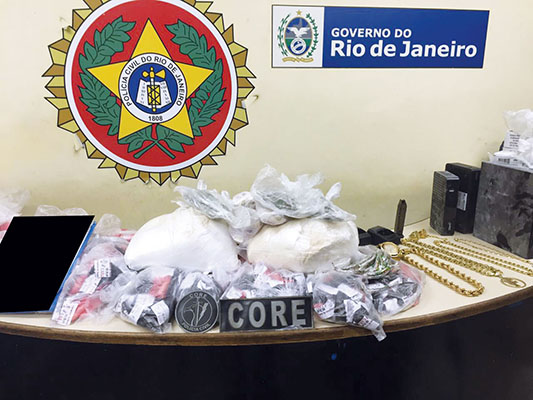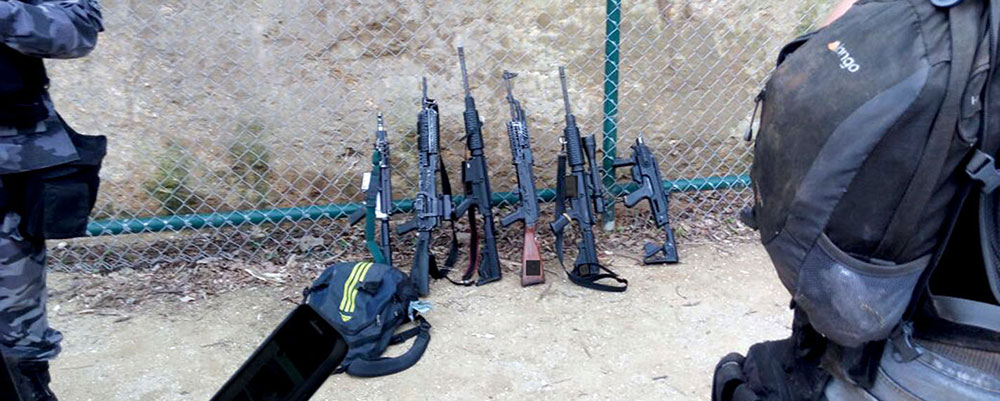NOTE
IAW USSOCOM Sanitization Protocol for Historical Articles on Classified Current Operations, pseudonyms are used for majors and below who are still on active duty, unless names have been publicly released for awards/decorations or DoD news release. Pseudonyms are identified with an asterisk (*). The eyes of active ARSOF personnel in photos are blocked out when not covered with dark visors or sunglasses, except when the photos were publicly released by a service or DoD. Source references (end notes) utilize the assigned pseudonym.
SIDEBAR
DOWNLOAD
Chief Warrant Officer Two (CW2) Phillip W. Fox* left the hangar after an early-morning discussion with officers of the Coordenadoria de Recursos Especiais (CORE), a special tactics unit belonging to the Rio de Janeiro Civil Police, and pilots of the Serviço Aeropolicial (SAER), the CORE air wing. The day before, Fox* and a small aviation foreign internal defense (AvFID) team from 3rd Battalion, 160th Special Operations Aviation Regiment (SOAR) (Airborne) (3/160th) had completed a week-long subject matter expert exchange (SMEE) with the Brazilian CORE and SAER. He had been asked to clarify some points on Sunday morning. Across the flight line, the Night Stalker saw police armed with M4 carbines boarding SAER Airbus AS-350(B3) Écureuils, and UH-1 Huey II’s, before launching in late-morning. Several hours later, they returned with a large quantity of illegal drugs, and several major traffickers in handcuffs.1 Success could be attributed to solid tactics, techniques, procedures, and planning, emphasized during the SMEE. The 3/160th AvFID team had built partner capacity and helped the Brazilians hone their skills. This was a tactical victory in the fight to improve national security for both Brazil and the United States.2
The SOAR flies, maintains, and tests rotary-wing and unmanned aircraft to provide long range assault and fire support to special operations forces at night and in adverse conditions. At its core, the SOAR exists, according to now-CW3 Fox*, “to take the ‘bad guy’ off the battlefield.”3 One way to reduce threats while advancing national strategic objectives is to train and cultivate relationships with the security agencies of partner nations.4 Doing so improves their capabilities and increases interoperability between ground and air units, military and otherwise.5 This article explains how a small, dedicated group of individuals in 3/160th created a formal AvFID program from the bottom-up between 2012 and 2016, at the same time that U.S. national strategy increasingly emphasized building partner capacity.6 It further argues that the program achieved tactical through strategic-level success in Brazil.
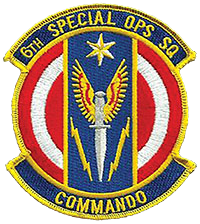
From 1994 to October 2012, the U.S. Air Force’s 6th Special Operations Squadron (6th SOS) was tasked by the U.S. Special Operations Command (USSOCOM) to provide rotary-wing training to partner nations.7 In the Western Hemisphere, however, elements of the SOAR were forward deployed with U.S. Southern Command (USSOUTHCOM) in Panama (see sidebar). The 617th Special Operations Aviation Detachment (617th SOAD), later D Company, SOAR (A), regularly participated in ad hoc engagements with regional aviation units, usually while supporting training conducted by 7th Special Forces Group (7th SFG).8 However, the relocation of D Company from Panama to Roosevelt Roads, Puerto Rico, in 1999, and then to Hunter Army Airfield, Savannah, GA, in 2003, increased the cost of conducting training in Central and South America, and the Caribbean.9 In the early-2000s, the demand for rotary-wing support in Afghanistan, Iraq, the Philippines, Africa, and Colombia exceeded the Army’s ability to provide such support.10 As a result of that high demand, particularly in the Middle East, SOAR engagement with partner aviation units declined, especially in the USSOUTHCOM area of responsibility (AOR).11
Between 2006 and 2016, several factors intensified the demand for 3/160th AvFID efforts in the USSOUTHCOM AOR. First, national strategy increasingly called for training partner aviation forces to combat terrorism and contribute to global stability. Doing so would reduce the demand on overstretched U.S. soldiers and materiel, and provide a cost-effective special operations forces (SOF) aviation capability where an overt U.S. presence was politically untenable.12 The emphasis on working with partner nations was reflected in geographic combatant command (GCC) and theater special operations command (TSOC) planning, resulting in greater demand for 3/160th assets.
Second, as part of the Department of Defense’s (DoD) long-term plan to transfer rotary-wing responsibility to the Army, the Air Force drew-down its helicopter capability in the early-2000s.13 As a result, demand for Army rotary-wing AvFID increased, and in 2012 USSOCOM transferred responsibility for training partner nations from the 6th SOS to the U.S. Army Special Operations Command (USASOC).14 The newly established U.S. Army Special Operations Aviation Command (USASOAC) stood up a cell to support USSOCOM and TSOC AvFID requirements, especially in the U.S. European Command, U.S. Africa Command, and U.S. Central Command AORs.15 However, the SOAR’s Modified Table of Organization and Equipment (MTOE) was structured for warfighting, not FID, limiting their ability to train partner forces.16 Since elements of 3/160th remained under the operational control (OPCON) of USSOUTHCOM, the battalion would assist with conducting AvFID in the Western Hemisphere.17
Third, the five-year effort to rescue three American contractors held hostage by the Fuerzas Armadas Revolucionarias de Colombia (FARC) in Colombia convinced some participants that improving partner nation interoperability was critical. The Colombian Army’s successful rescue of the hostages demonstrated the potential for achieving operational success ‘without black helicopters.’ This conclusion led to increased demand for joint combined exchange training (JCET) in the region.18 While the demand for support increased, 3/160th AvFID was still conducted ad hoc in the late-2000s.
According to then-Lieutenant Colonel (LTC) Kirk E. Keepers, 3/160th commander from 2009–2011, increased demand on the battalion required “maximizing capacity” by ensuring training events supported the TSOC and helped Night Stalkers obtain qualifications.19 In addition, the cooperative relationship between 3/160th and 4th Battalion, 160th SOAR (A) (4/160th) created scheduling flexibility, as 4/160th occasionally ‘covered’ rotations to the Middle East. Third battalion ‘paid-back’ those rotations, Keepers noted, and it was “guys sacrificing dwell time” that allowed 3/160th to support its USSOUTHCOM theater requirement and the national mission.20
In 2009, Keepers made CW5 William D. ‘Dean’ Vanderberry a part-time 3/160th liaison (LNO) to Special Operations Command-South (SOCSOUTH).21 Vanderberry, a Flight Lead and son of an Air Force Senior Master Sergeant, served in the position until 2012.22 He was chosen for the position because of his experience in the AOR, having served in D Company in the 1990s, and his ability to balance the role with his responsibilities as a subject matter expert in other areas.23
As the SOCSOUTH LNO, Vanderberry occasionally led AvFID-type missions, similar to those the unit had conducted since the late-1980s. Vanderberry’s goal was to develop a program that worked with partner nation units to identify the type of training they wanted, assess their skill level, and determine how to help them achieve their objectives with a self-sustaining program. The keys to engagement, Vanderberry concluded, were finding individuals within 3/160th whose personalities were conducive to building relationships and developing trust, to set the basis for long-term engagement based on feedback from the partner nation. Relationships, consistency, and tailored training—humans not hardware—were the core of the program. Maintaining consistent contact with specific units, however, was challenging, since priority countries occasionally changed at the GCC level.24
Nearing retirement, in 2012, Vanderberry asked to work with then-CW4 Robert X. Villarreal, a Fully Mission Qualified pilot who Vanderberry hoped would assume the role of SOCSOUTH LNO and further develop an AvFID program after his departure. In addition to his Spanish fluency, Villarreal was a prior-enlisted Ranger, which gave him the rare ability to provide the first-hand perspective of both a ground soldier and a pilot. Vanderberry and Villarreal then developed a schedule of standardized classes to teach partner nations.25 They worked with the 160th Training Development and Support Cell (TDSC), and the Regimental S-2, for disclosure authorization of selected training material. Soon after, the two began implementing the program, taking available personnel within the battalion on site surveys and training trips in the USSOUTHCOM AOR, identifying challenges along the way. In particular, DoD instructions and unfavorable risk assessments kept them from riding on partner nation aircraft, at times complicating efforts to establish trust with counterparts.26
The Army’s commitment to rotary-wing AvFID expanded over the next two years, as 3/160th responded to increased demand from USSOUTHCOM. In 2013, Lieutenant General (LTG) Charles T. Cleveland, Commanding General, USASOC, introduced ARSOF 2022, which reflected national guidance in emphasizing the need for building capacity in partner forces.27 In August of that year, 3/160th began working with the Brazilian Coordenaçao de Aviaçao Operacional (CAOP) during a SMEE.28 The engagement enhanced 3/160th’s AvFID capability, and established a foundation for future cooperation in Brazil.
In July 2014, two events furthered the evolution of 3/160th’s AvFID efforts. First, then-Major (MAJ) Matthew L. Parker, a 160th alum, was assigned to the TSOC and became the Air Operations Officer for SOCSOUTH.29 With MAJ Parker as a conduit to SOCSOUTH, 3/160th was able to effectively engage the U.S. interagency, embassy teams, and partner nations. They were also better able to discern the operational objectives of the TSOC and GCC, and to articulate the aviation-specific aspects of FID to SOCSOUTH. Specifically, SOCSOUTH agreed to recognize four AvFID priority countries, alleviating the challenge of shifting efforts and inconsistent engagement. Thus, the battalion’s AvFID program was enhanced, and its integration into theater planning was improved.30
Second, then- LTC Ronald C. Black, 3/160th commander from 2013–2015, decided to formalize AvFID to support consistent tasking from SOCSOUTH. LTC Black tasked Villarreal and then-CW2 Fox*, a native of Pendleton, SC, with developing a dedicated AvFID program. In addition to being a Fully Mission Qualified pilot and company safety officer, Fox* was conversant in Spanish, and quickly learned Portuguese.31 LTC Black noted that, since 3/160th did not have MTOE positions for FID, he decided to stand-up an internal cell to create the program. The cell aligned its travel with quarterly trips to the AOR to reduce the effects of the additional workload. The cell developed the AvFID model, and drove the process, while LTC Black ensured policies, procedures, and regulations were aligned.32 LTC Black emphasized that “Dean Vanderberry, Bobby Villarreal, and Phil Fox* are the real superstars. I just supported because they were crushing it.”33
Then, in August 2014, Villarreal and Fox* routed their initial plan to LTC Black. They proposed using small teams of 3/160th advisors to fulfill four primary FID roles: assessment, training, advising, and assisting partner nations. Villarreal and Fox* proposed a five-phased approach to AvFID. After appraising the partner’s baseline capabilities in phase one, basic SOF mission planning would be conducted in phase two. Phase three would entail advanced SOF mission planning, progressing into advanced aircraft tactics, techniques, and procedures in phase four. Phase five would involve a full mission profile (FMP) exercise, and continuity training in an advise and assist role for 3/160th.34 Crucially, the program was grounded on mission planning and classroom training, not training in 160th aircraft. Throughout the next year, Villarreal and Fox* honed their plan, working on a formal 3/160th AvFID guide as national strategy continued to prioritize partnering as a means of protecting U.S. interests.35
“Develop and sustain their ability to utilize aviation assets and support their defense.”— MAJ Matthew L. Parker,Air Operations Officer for SOCSOUTH
In January 2015, a SOCSOUTH Mission Guidance Letter to 3/160th directed the unit to “build enduring relationships and be the military partner of choice for partner nation near-peer conventional aviation and aviation special operations forces.” SOCSOUTH emphasized that those “relationships are foundational to [the] success of our long-term strategy.” Partnering included FID to “develop unit skills and capabilities of selected partner nation SOF.”36 According to Parker, AvFID would help partner nations “develop and sustain their ability to utilize aviation assets and support their defense.” Moreover, AvFID would contribute to developing “interoperable aviation forces to support U.S. forces requiring mobility” in contingency operations.37 The ability to communicate in host nation language, the memorandum noted, was important, a point that the 3/160th AvFID cell consistently emphasized.38
The same month, a six-man 3/160th team traveled to Brazil to conduct an AvFID Phase 1 assessment, and to prepare the CAOP for follow-on engagements. Villarreal led a five-man Pre-Deployment Site Survey (PDSS), while Fox* participated in a SMEE.39 The team met with representatives from the CAOP to invite the unit to participate in an upcoming JCET, and discuss what training they would like to conduct during the event. The CAOP “went all-in” in deciding to work with 3/160th, according to Fox*. The visit laid the groundwork for what the AvFID cell expected to be the “proof of concept” for their program over the coming months.40
During the PDSS, the team met with the U.S. Military Group (MILGRP), Army and Air Force Section Chiefs, and the Defense Attaché Office (DAO), as well as Brazilian Air Force and civilian aviation authorities. Those interactions allowed the team to obtain clearance for flight operations with U.S. military aircraft in Brazilian airspace. Finally, meeting with leaders in the Brazilian aviation units helped the AvFID team develop a training plan for the JCET and SMEE later in the year.41
Meanwhile, the classroom conversation during the January SMEE focused on establishing a maintenance and operations baseline. The discussion assessed Brazil’s aviation readiness, and contributed to the development of basic mission planning formats and products. The conversation overviewed tactics, techniques, and procedures (TTPs) for different environments, maintenance programing, and enhanced mission planning. Perhaps most significantly, it allowed the 3/160th AvFID team to establish relations with the Brazilian law enforcement SOF community. The variety of assessments gave the AvFID team an understanding of Brazil’s aviation readiness.42 The assessment also resulted in an acknowledgment that the CAOP was ‘Phase 1 complete,’ setting the stage for more advanced training during JCET 452 later in the year.43
Throughout the spring of 2015, Fox*, Villarreal, and MAJ Christopher T. Wickam*, then the battalion operations officer, revised and completed a 3/160th AvFID guide. The nearly-200 page document standardized AvFID efforts in the battalion. It carefully outlined “lessons learned, best practices, and checklists” to “aid in the conceptualization, planning, execution, and recovery of units” working with partners in Central and South America.44 Building on years of groundwork, Villarreal and Fox* finished formalizing the program as LTC Black had directed.
The AvFID team’s work paid off when the Secretary of Defense approved JCET 452 to Brazil as part of the 2015 Global Force Management Allocation Plan. Per that plan, 3/160th trained with forty personnel from the Brazilian Diretoria Executiva, Policia Federal, and nine individuals from the Brazilian Special Operations Command. The JCET took place from 20 June to 31 July in Brasilia, the nation’s capital, and Goiania, where the Army’s Special Operations Brigade (Brigada de Operações Especiais) is headquartered.45 The aviation portion took place from 16 to 31 July, and was the first implementation of the AvFID cell’s ‘five-phase process.’46 Training focused on a variety of joint mission-essential task list items, including operations planning, rotary-wing integration, helicopter infiltration and exfiltration techniques, and joint terminal attack control.47
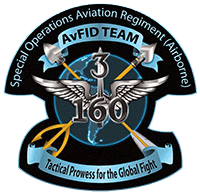

During the exercise, nine pilots and thirty enlisted members of 3/160th, and six airmen from the U.S. Air Force 720th Special Tactics Group, conducted training using two MH-60M Black Hawks brought into the country on a C-17 Globemaster III. The training was extensive, and included strategic air operations, day and night air-land operations, day and night fast rope insertion and extraction system operations (FRIES), USSOCOM currency training in support of aircrews and the ground force, urban and multimode radar currencies, and time sensitive target and deliberate mission planning and execution. It culminated with an FMP scenario in Brasilia.48 During the FMP scenario, Fox* notes, “CAOP helicopters performed sniper over-watch and casualty evacuation (CASEVAC) operations between assault force lifts of 160th MH-60Ms. CAOP crews were included in the 160th planning cell, and helped the 160th with operations in the airspace. Our mutually supporting efforts provided continuous coverage to the ground force. It was truly combined, with U.S. and Brazilian aircraft affecting the same targets.”49
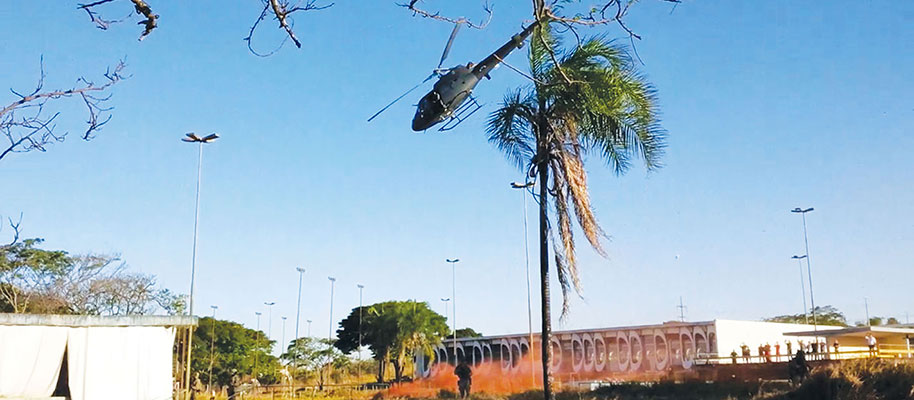
The JCET helped the AvFID team identify lessons used to refine their program. In particular, they noted that conducting a SMEE simultaneous to a ground force JCET led to competition for assets between the Brazilian units. Moving forward, they decided to conduct the aviation SMEE “before the JCET to expose the aviation assets to the concepts they would see in the following days.”50

